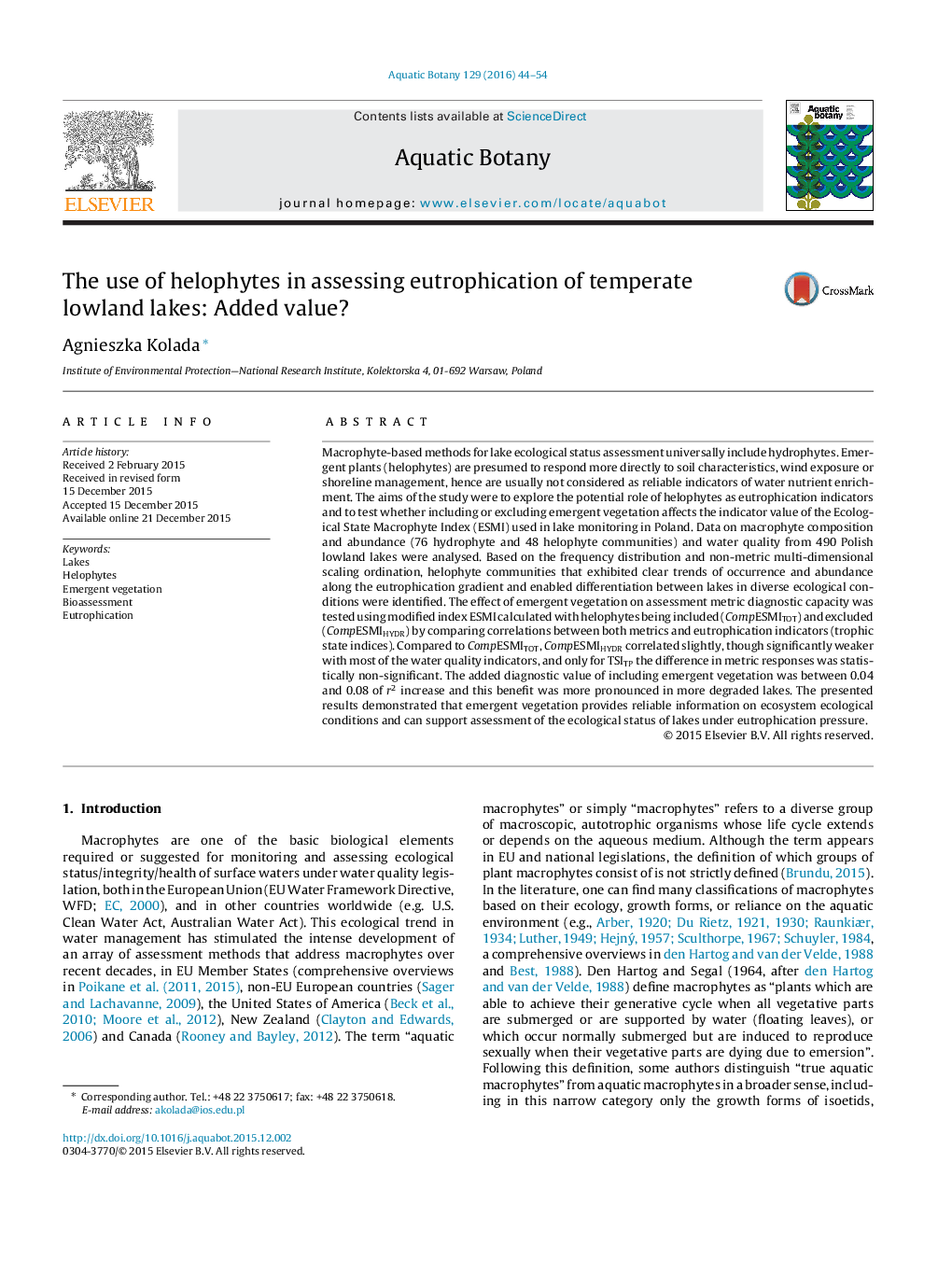| کد مقاله | کد نشریه | سال انتشار | مقاله انگلیسی | نسخه تمام متن |
|---|---|---|---|---|
| 4527619 | 1625813 | 2016 | 11 صفحه PDF | دانلود رایگان |
• Helophytes provide reliable information on ecosystem condition.
• Excluding helophytes limited the sensitivity of macrophyte index to eutrophication.
• The negative effect of excluding helophytes was stronger in more degraded lakes.
Macrophyte-based methods for lake ecological status assessment universally include hydrophytes. Emergent plants (helophytes) are presumed to respond more directly to soil characteristics, wind exposure or shoreline management, hence are usually not considered as reliable indicators of water nutrient enrichment. The aims of the study were to explore the potential role of helophytes as eutrophication indicators and to test whether including or excluding emergent vegetation affects the indicator value of the Ecological State Macrophyte Index (ESMI) used in lake monitoring in Poland. Data on macrophyte composition and abundance (76 hydrophyte and 48 helophyte communities) and water quality from 490 Polish lowland lakes were analysed. Based on the frequency distribution and non-metric multi-dimensional scaling ordination, helophyte communities that exhibited clear trends of occurrence and abundance along the eutrophication gradient and enabled differentiation between lakes in diverse ecological conditions were identified. The effect of emergent vegetation on assessment metric diagnostic capacity was tested using modified index ESMI calculated with helophytes being included (CompESMITOT) and excluded (CompESMIHYDR) by comparing correlations between both metrics and eutrophication indicators (trophic state indices). Compared to CompESMITOT, CompESMIHYDR correlated slightly, though significantly weaker with most of the water quality indicators, and only for TSITP the difference in metric responses was statistically non-significant. The added diagnostic value of including emergent vegetation was between 0.04 and 0.08 of r2 increase and this benefit was more pronounced in more degraded lakes. The presented results demonstrated that emergent vegetation provides reliable information on ecosystem ecological conditions and can support assessment of the ecological status of lakes under eutrophication pressure.
Journal: Aquatic Botany - Volume 129, February 2016, Pages 44–54
